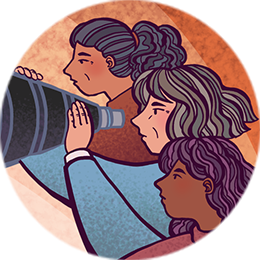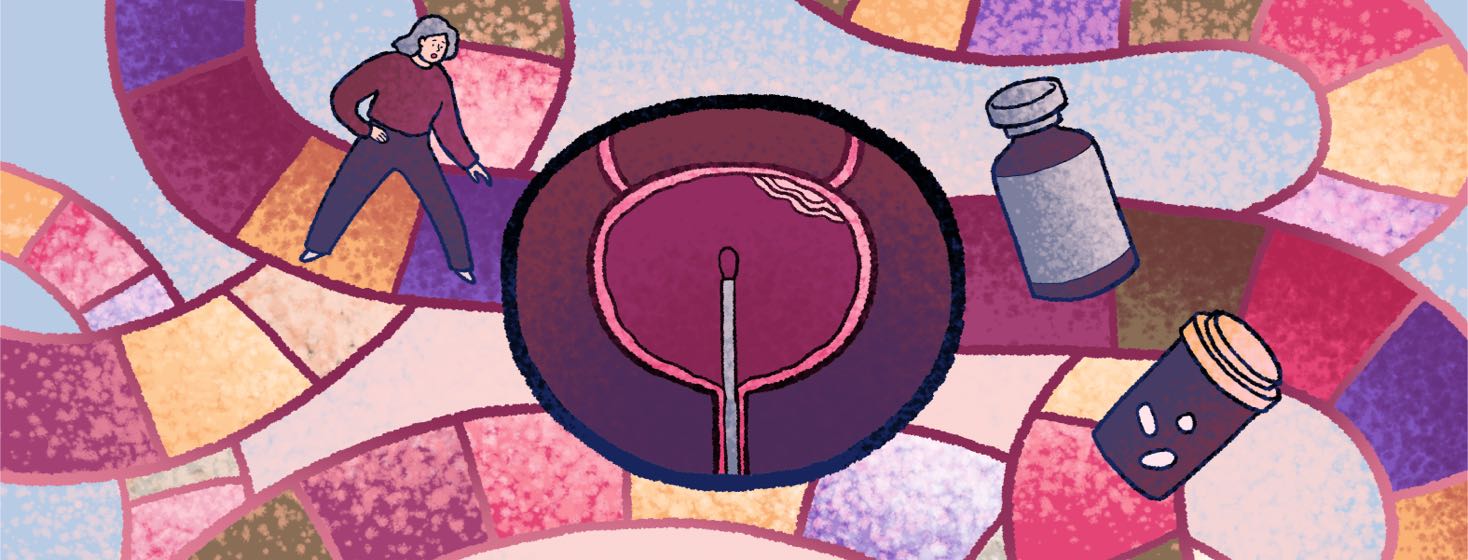One Woman's Bladder Tumor Resection Experience
My son picked me up for the 45-minute drive to the surgical pavilion at UW Medical Center. We arrived 10 minutes past check-in time, and everything was fine.
I told the nurses at the COVID checkpoint that my son would be checking after he parked the car. And he made sure I was admitted before he headed to the cafeteria to work remotely.
In the beginning was the pre-op
Surgical prep included the repeated battery of questions from each nurse:
Who are you? When were you born? What procedure are you having? Have you been exposed to COVID? Do you have COVID symptoms? When did you last eat? When did you last drink? Did you wash with the special soap we provided?
My answers were always the same and correct.
A skilled, caring hospital staff
The attending nurse (Catherine from Scotland) took my vitals, tested my blood sugar, and injected heparin (anticoagulant) into my abdomen. Her engaging manner was the calm for my initial nervousness.
The IV nurse was kind enough not to poke my hand or wrist. Instead, she found a good vein in my left arm, at my request. The third nurse inserted a urinary catheter without Lidocaine. It didn't hurt for long and was quickly removed.
"This will enhance the blue-light cystoscopy during your cystoscopy," she explained as she injected Cysview into my bladder.
Introducing the surgical team
While I held the solution in (for an hour), I met each member of the operating team. Doctor P reviewed the steps of our upcoming procedure and answered my questions. First, one anesthesiologist, and then, another explained the method and side effects of anesthesia.
Propofol was the usually designated drug. I asked. Finally, Doctor P's assistant introduced himself for the first time. With 35 minutes to spare before surgery, I practiced deep breathing until the second anesthesiologist whisked me away.
We are ready for you, Ms. Harmon
In operating room 7, a large monitor displayed my name, patient number, and scheduled procedure. I scooted onto the table while the team verified my identity.
It is always a little chilly in the operation room but that was soon forgotten as I drifted off to the words "just breathe deeply." The next thing I knew, I was in recovery, coughing from having had a breathing tube in my throat.
As a side note, I call TURBT surgery because my doctors do. I was wheeled into the operating room and heart monitors were attached before I was placed under anesthesia. My body was invaded. That is surgery, in my book.
The last step: Intravesical chemo
Minutes after I woke up, the catheter nurse injected gemcitabine into my bladder. Few experiences have tortured me more than the unrelieved urge to pee. With each surgency, I watched the liquid rise and fall in the catheter tube and prayed for it to be over.
What a relief when the nurse finally did drain my bladder. And shortly afterward, I was released to go with anti-spasm medications in hand.
Aside from two days of burning during urination, I felt no notable bladder discomfort.
The findings of the blue-light cystoscopy
Pathology confirmed a small amount of papillary carcinoma. The robust papillary carpeting was some sort of benign metaplasia - abnormal cell tissue.
The entire 2-centimeter patch was lightly shaved and all abnormal cells were removed. Hopefully, intravesical therapy will successfully prevent both from recurring.
Returning to normal
All things considered - I am mending nicely. My bladder seems generally calm and agreeable. Yes, I wore disposable panties for the first few days, and rightly so.
My bladder was weak from the surgery. But this time, the catheter was not left in place. There were no spasms or pain afterward, just the usual bleeding and burning during urination. Both side effects cleared up after 2 days.
On day 3, I resumed a solid food diet. For a couple of days after that, I suffered gas, bloating, reflux, and occasional cramping.
My bowels performed a 5-meal cleanse, which was concerning. It was also uncomfortable. Fortunately, I was able to rebalance my digestion by lowering my fiber intake.
Complete recovery cannot be rushed
One thing I have learned by getting older is that there is no rush to heal. Not if I want to heal deeply and completely. I deserve every minute of my pre-approved 3-week medical leave and more.
Sleep is essential to healthy cell regeneration, and I will savor it. But my recovery extends beyond physical convalescence. It includes my mental and emotional rehabilitation through this stressful process. Although it is tempting, I will not spoil my rest with thoughts of returning to work. That will come soon enough.
In the meantime, I am set to begin a 6-week gemcitabine induction next week. So, let's do this! Tell us about your TURBT experience in the comments below, or share your story with the community.


Join the conversation